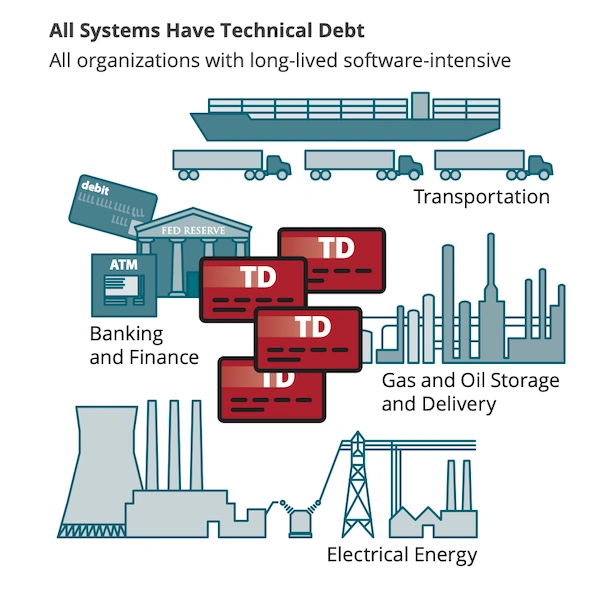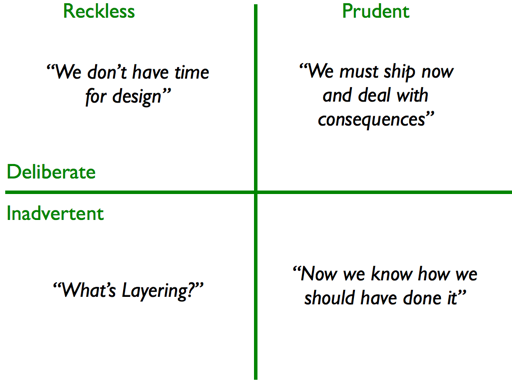Learn what technical debt is, its hidden costs, and practical strategies to effectively manage and reduce it for faster development.
Ever feel like your software projects are moving through quicksand? Like every new feature takes longer, and fixing one bug just sprouts three more? If so, you're likely grappling with technical debt. It's a critical concept in software development, often misunderstood, but understanding how to manage technical debt is the first step to reclaiming your team's agility and your product's health.
This guide will break down what technical debt truly means, its silent impact on your projects, and effective strategies to reduce technical debt and improve your software's potential.
The term 'technical debt' was first coined by Ward Cunningham, one of the creators of the Agile Manifesto, drawing an analogy to financial debt.
At its simplest, technical debt is the future cost incurred by taking shortcuts or making suboptimal decisions in software development. Think of it like taking out a financial loan: you get something now (speed, quick delivery), but you'll pay interest later (in the form of increased effort, bugs, slower development, or reduced flexibility).
It's not always malicious, or even avoidable! Technical debt can accumulate due to various factors:
So, while "bad code" is definitely a symptom, technical debt encompasses a much broader range of issues, from architectural choices to missing tests, all contributing to future friction.

Technical debt comes in many forms, each with its own flavor of pain. But here's the crucial twist, technical debt isn't always born from malice or sloppiness. It actually comes in two main flavors:
This is when you consciously make a suboptimal choice for a clear, strategic reason. Maybe you're rushing to hit a critical market window, prototype an idea, or test an assumption. You know the shortcut creates debt, but you decide the short-term gain is worth the future cost, and you usually have a plan to pay it back. Think of it as a calculated business decision.
This is the sneakier, often more dangerous kind. It accumulates unconsciously due to things like:
Lack of Knowledge or Experience: Sometimes, developers just don't know the "best" patterns or tools at the time.
Hasty Design: Cutting corners on architecture or coding practices from day one because you don't fully understand the long-term implications.
Evolving Requirements: What looked like a brilliant design at the start might not fit when things change, and the old code suddenly becomes debt without anyone realizing.
.webp)
Technical debt isn't just an abstract concept; its effects are very real and can be painful for any development team:
Slower development speed: The "interest" on your debt means every change takes longer. Adding a new feature? You might first have to untangle complex, undocumented code. Fixing a bug? It might involve risky changes to fragile legacy components. This directly impacts your development velocity.
Increased costs: More time spent on maintenance and bug fixes means less time for innovation, directly impacting your budget and time-to-market. It's a hidden tax on your resources that leads to higher project costs.
Reduced innovation & flexibility: When your team is constantly bogged down by fixing old problems, they have less capacity and mental bandwidth to build exciting new features or explore new technologies. This stifles software innovation.
Higher risk & more bugs: Fragile codebases and untested areas are breeding grounds for errors. Deploying changes becomes a high-stakes gamble, leading to more frequent outages and frustrated users.
Demoralized teams: Continuously battling technical debt can lead to developer burnout, frustration, and a general sense of dread about touching certain parts of the codebase. It makes the job harder and less rewarding, impacting developer morale.
.webp)
While technical debt can pop up anywhere, legacy systems are often massive reservoirs of it. These are typically older, often monolithic applications built on outdated technologies. They are prone to accumulating legacy technical debt because:
They're hard to update: Imagine trying to upgrade an ancient house with modern plumbing when you can't even find the original blueprints!
Knowledge is scarce: The original architects might have moved on, leaving current teams with limited understanding.
Integration headaches: Connecting old systems to new, shiny services is often brittle and complex.
The "If It ain't broke..." mentality: The sheer risk of touching critical, yet fragile, legacy systems often deters necessary updates, allowing debt to compound.
You can't eliminate technical debt entirely, and honestly, you shouldn't try! Sometimes, intentionally taking on "good debt" is a strategic choice (e.g., to hit a critical market window).
“Even the best teams will have debt to deal with as a project goes on - even more reason not to recklessly overload it with crummy code.”
Martin Fowler

The key is to manage it proactively and pay it down strategically. Here are effective technical debt management strategies:
Technical debt isn't a dirty secret. Bring it out into the open. Make it a visible item in your planning sessions (sprint backlogs, roadmaps). This is crucial for prioritizing technical debt.
Dedicate regular time each sprint or release for "paying down debt." Call them "Refactor Sprints," "Clean Code Days," or "Engineering Health Weeks." Consistency is key to reducing technical debt consistently
Encourage every team member to take responsibility for code health, not just features.
Implement rigorous documentation and code review processes. New hires should easily understand how things work.
This brilliant strategy (named after a tree that grows around another tree) involves incrementally replacing parts of a monolithic legacy system with new services. Gradually, the new system "strangles" and replaces the old, effectively reducing legacy technical debt with minimal risk.

Integrate tools like static code analysis into your CI/CD pipelines. Automatically catch code smells, vulnerabilities, and potential debt before they snowball.
Not all debt is equal. Work with product and business stakeholders to prioritize debt based on its impact on product stability, development velocity, and future innovation. This is key for effective technical debt management.
Embed quality and security checks early in the development process. The earlier you find issues, the cheaper and easier they are to fix.
Wrap those legacy apps in containers to make them more portable and manageable, even if the internal code is still old. This can help isolate and manage legacy technical debt.
Break large, unwieldy monoliths into smaller, independent services. This allows you to modernize components one by one without affecting the entire system, a powerful approach for refactoring technical debt.
Manage your infrastructure (servers, networks) with code. This brings consistency and reduces manual errors, creating a more stable foundation.
Implement comprehensive logging, metrics, and tracing. You can't fix what you can't see! Get deep insights into system behavior to pinpoint issues quickly.
Let's be real, tackling technical debt isn't always glamorous. You might hit roadblocks:
Resistance to change: People are comfortable with the status quo, even if it's painful.
Resource constraints: Getting budget and time for "invisible" improvements can be a tough sell to stakeholders focused on new features.
Skill gaps: Modernization might require learning new tech.

But here's the payoff: by starting small, demonstrating quick wins, and communicating the long-term benefits, you can overcome these. Strong leadership buy-in and continuous investment in your team's skills will pave the way.
Ultimately, addressing technical debt isn't just about fixing old code; it's about investing in your software's future. It leads to:
What's your biggest technical debt headache right now? Learn how to effectively measure, quantify, and prioritize technical debt in your software projects or contact us and we’ll outline a strategy and provide you with the tech to slash your technical debt based on your needs.